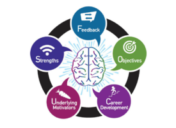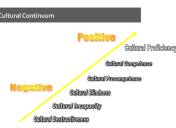Avoiding the “Big Four” Diseases: Developing Yourself and Your People for Improved Health and Productivity
DFW HR Roundtable Featuring Elizabeth Naylor, Ebenezer Wellness
Recognizing the importance of promoting good health in the workplace, Pearson Partners invited nutrition expert Elizabeth Naylor, founder of Ebenezer Wellness, to speak at the April 10 bimonthly meeting of the DFW HR Roundtable, a networking and knowledge-sharing group of senior human resources executives in the North Texas area. Here is a summary of her comments about avoiding the “big four” health problems: cancer, heart disease, diabetes and dementia.
While 90 percent of U.S. companies claim to have a wellness program in place, most employers are unable to measure the true impact on employees. At least part of the reason is that most organizations launch activity-based programs, rather than offering tools to support their people in making better choices moment-by-moment. Our session examined commonly held beliefs about wellness programs and identified what works and what doesn’t in terms of having an impact on outcomes.
Q. Why is wellness and disease prevention so important to our society?
A. Preventive health is far less expensive and much more effective than medical intervention to treat disease or other health problems. In addition, good health means energy, vitality and a higher quality of life—not just the absence of disease.
Q. Can anyone avoid the “big four” health problems?
A. In a world of conflicting headlines and confusing research, people constantly wonder if there is anything they can do to improve their chances of avoiding the big four diseases—cancer, heart disease, diabetes and dementia/Alzheimer’s. The answer is that they can indeed make it to 85 or 95 and still be healthy and happy. But individuals and groups must focus attention on maintaining good health and making any necessary changes in our diets, fitness habits and lifestyles.
Q. So, how can employers promote better health in the workplace?
A. First, employers need to understand that change happens over time—one person at a time, with one small step at a time and with one decision at a time. This change often occurs within the context of a trusted relationship and can even be contagious in a group environment. In a business setting, providing support through health professionals who focus on prevention and supporting the individuals’ best thinking is key to better health decisions in the moment.
Q. How does that change occur?
A. Employers need to focus their attention on the source of health outcomes, rather than activities. Currently, wellness program spending focuses about 10 to 20 percent on measuring results, while 80 percent to 90 percent of spending revolves around activities and incentives. So, a wellness program actually needs to work “backward” from the drivers of desired outcomes when considering avoiding the big four.
Q. Can you explain that process?
A. There are actually four stages to effective health outcomes. The last two are actually measuring the outcomes (i.e. blood pressure and weight) and focusing on the activities that drive those outcomes. The step before activities is decision making. This occurs moment by moment in a unique individual in a unique situation. Because this decision power is with the individual and they have an infinite number of variables that go into the decision, the most effective thing we can do is support that person in the moment. This is done by supporting the step before decisions—valuing. This is the thinking behind choices. Supporting a person’s understanding of their patterns of thinking supports bringing forward their best thinking, and with it the intrinsic motivation to make healthier decisions.
Q. Where should employers apply their resources in this process?
A. I would suggest that we shift spending from activities and incentives to individual and group support for finding best thinking. This clarity then drives the individual to self-select the activities that are important to them. For example, there are currently measurement tools that allow me to see where my thinking goes first. If it systematically goes to noticing the work to be done and other’s needs and never to noticing my own needs, that would explain my poor health choices. In fact, a wellness program that stressed “Just DO It” would engage me at first because I would feel the pressure, but I would quickly drop out and feel stressed in the process. Stressed because I did not “do enough” and stressed because it took time away from caring for others in my life.
Q. Besides fitness, what are some of the other issues that can be addressed in wellness programs?
A. Preventive health and self-care are areas of great potential. Understanding more about the drivers of health and disease, particularly regarding nutrition and stress, can be leveraged to provide long lasting benefits. In addition, supporting best thinking in individuals and groups supports the moment by moment decision making that leads to better decisions and less stress.
Q. How do you measure success of a wellness program?
A. I believe you need to measure success by the anecdotal stories told by participants. Stories are intrinsic by nature. They tell what happened to that individual and they motivate others as they are taken into the unique decision making of the person hearing or reading them. You can measure these patterns of best thinking as well—as individuals and throughout the organization. In addition, it is great to measure biometrics annually and productivity measures are also important. If you are looking for cost savings, I recommend that you change your plan accordingly.
Q. So, what is the basis for a “healthy” wellness program?
A. If your motivation is valuing your people as your greatest asset then investing in their development makes perfect sense. That’s a stronger foundation than looking to reduce costs or improve profitability. Ultimately, you want to expand your vision of wellness to one of increasing productivity and developing your people. That is the path to improved health outcomes.













